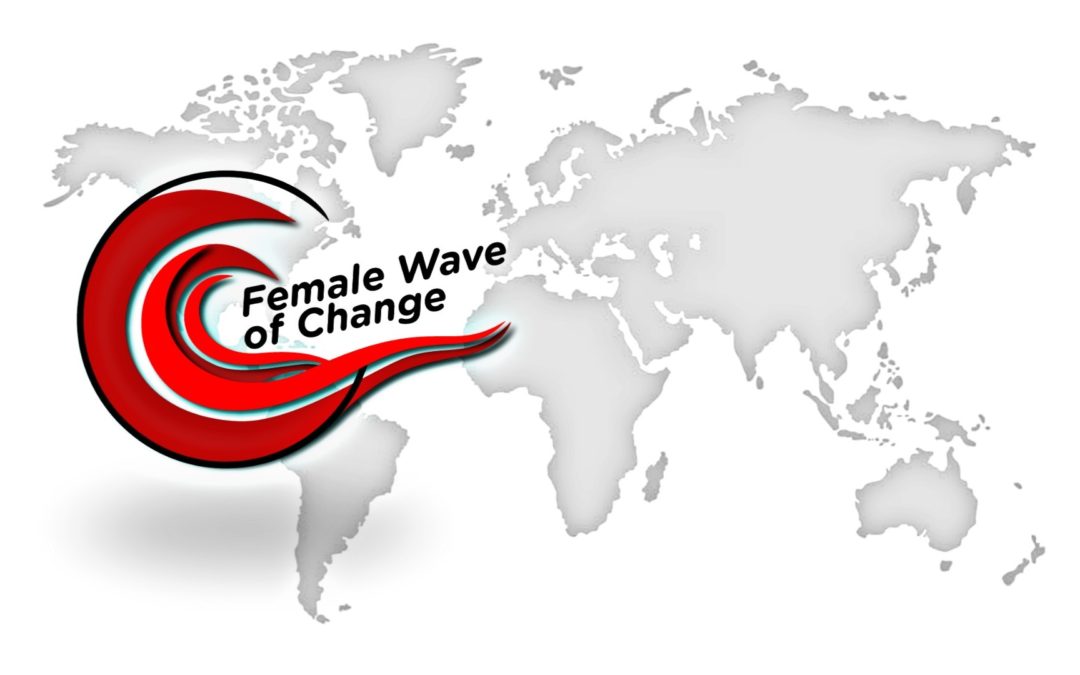
by pam | Apr 17, 2020 | Change, Creative Living, Embracing Change, Leadership, LeadinginUncertainTimes
During this time of immense change and uncertainty have you felt distracted, anxious, had difficulty sleeping? If so you are not alone. It’s happened to me and a number of my friends, colleagues and clients I’ve recently spoken with.
Many people are noticing that old patterns or beliefs they thought they had dealt with and/or cleared years ago, are surfacing. Others feel like they’re on an emotional teeter-totter; one day feeling upbeat and positive and the next feeling sad, anxious and overwhelmed.
What has helped me to get focused and stay positive is a decision I made several weeks ago to accept a new position and project in my life. Since that day (March 20), I have felt energized, creative, and focused.
I’m excited to share that I recently was named Ambassador for Canada of Female Wave of Change, a global movement that unites women who are changing the world into a better place. Female Wave of Change offers women from all walks of life a safe space where they can be their authentic selves, be economically empowered and grow into leaders and changemakers who shape the world for their own futures and for future generations. “I join(ed) FWoC because I feel so aligned with their Purpose, Vision, Mission and Core Values and I want to be part of this amazing group of women (and some men) and contribute to expanding and strengthening this incredible wave of change.”
To learn more about the Purpose, Vision, Mission and Values of the group visit: https://femalewaveofchange.com.
Ingun Bol, the founder, from the Netherlands, started the movement only 3 years ago and currently has Ambassadors in more than 40 countries. Achievements to date include: 1) designing and rolling out Women Leading in Change; a 12 module group online leadership program for women who want to make impactful changes. The program prepares women to be authentic leaders drawing on their feminine qualities and values; 2) designing Reshape the Future – a modular online program aimed at empowering and teaching participants to become agents of change by building on their inner strengths, talents and capabilities. This leadership program was initially to roll out in April 2020 and has been postponed till September 2020; 3) Hosting their first global conference in Johannesburg in September 2019 where a Call to Action on Human Rights was developed.
In addition, Ambassadors with the support of their “Wavemakers” from different parts of the world, have been designing and implementing impactful projects such as one that taught poor African women financial literacy and supports them to secure mortgages they eventually pay off so they can own their own homes.
Areas of focus for various months in 2020 were identified last year and due to COVID-19, the leadership team recently revisited their priorities and decided to offer free virtual webinars, workshops, coaching and dialogue sessions related to the Corona Virus and situations we are all currently facing, and open these up to everyone. I was honored to have the opportunity to moderate a recent Panel of Older Wise Women where they shared their Purpose, their Visions of the World after COVID-19 and their views on Feminine Leaders of the Future.
You may access recordings of recent virtual webinars/workshops, etc. on the Female Wave of Change YouTube Channel and learn about upcoming workshops and events on Facebook at Female Wave of Change Global . We’d love to have you join us!
What new “thing(s)” are you creating or focusing on during this time when we’ve all been forced to slow down and reflect? Perhaps it’s your garden. Perhaps you’re cooking more and trying new recipes. Perhaps you’re drawing and painting. What is energizing you and keeping you focused? I’d love to hear from you below.
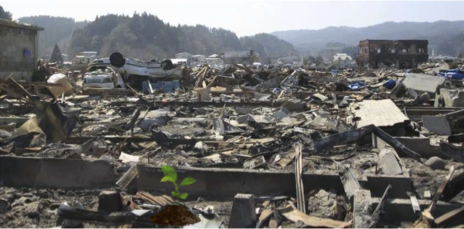
by pam | Mar 26, 2020 | Change, Creative Living, Dealing with Uncertainty, Embracing Change, Women in Business
I believe that embracing change is a creative process
that opens us up to new possibilities.
During these uncertain and
challenging times it may seem counterintuitive to think about change and
creativity together in the same sound bite. That said, believe it or not, this
is the opportune time for you to tap into
and express your creative side.
I encourage you to sit down,
close your eyes and take a few moments to pause and reflect. Ask yourself, what positive changes have come out of this
pandemic for you, your relationships, your community, your business, your work?
For many, it is the
opportunity for the first time to work from home. If this is you, it may be an
enjoyable and productive experience; or it may make you realize that being on
your own, you miss the camaraderie of colleagues, easily get distracted, and
find it challenging to get work done. This is a gift, as now you know that
working on your own at home is not a preferred option for you.
For others who own their own
businesses, initially you may have experienced fear and have had to “let go” of
some of your employees, and yet when you “go inside”, you realize that your
business is not exciting you anymore and hasn’t for some time. You may have
been feeling uninspired but didn’t know how you could exist and earn a living
without your “tried and true” business or job. This is a time to experiment
with different ways of running your existing business. It is a time ripe for innovation.
Now you have the opportunity
to explore what “lights you up” (see https://pamela-thompson.com/believe-that-you-are-here-to-make-a-difference/ for an exercise on how to identify your passions),
and to clarify your core values (refer to https://pamela-thompson.com/do-you-live-in-alignment-with-your-core-values/ for more details), so that when you return to a “new
normal” , whatever that looks like, you will be in a position to reinvent
yourself , whether it be to find that job of your dreams or start that new
business you’ve been putting off for some time, perhaps years.
What about key relationships in your life? What realizations has this time of social distancing “brought up” for you? It could be the conscious awareness that connection and regularly speaking with friends and family is really important for you. I’ve found that I want to call and FaceTime or Skype with close friends, rather than text or email them. I feel a strong need to be in community. Fortunately, I am part of a Women’s Circle that meets face-to-face every 2 weeks. We met via Zoom for the first time this past week, were creative with our process, and it worked really well. A fun and creative activity my husband and I have planned for this evening is a virtual birthday party for one of our young granddaughters.
A tool I’ve found helpful
during these times is journalling using writing prompts such as: What is the silver lining in this
experience? Have my priorities changed? What is most important to me? How can I
change my life so each day I focus on those things and people that are most
important to me?
I invite you to begin meditating daily if this is a new experience for you and/or something you’ve been “putting off” and meaning to do for a while. I find Deepak and Oprah’s free 21-day Meditation Experiences (e.g. Finding Hope in Uncertain Times – https://chopracentermeditation.com/store/product/156/hope_in_uncertain_times_streaming); extremely helpful to ground me and keep me focussed on the positive during these times of massive change and uncertainty.
It is important to express your feelings during challenging
times. Drawing and/or painting may be helpful for you to release negative
feelings and to create positive “pieces”; paintings or drawings that remind you
of hope, connection, and people and activities that bring you joy and connect
you with your inner child.
Visioning is
another tool to create possibilities out of the current chaos and uncertainty. Ask
yourself, What do I want the world to
look like after this pandemic? Do I see more people aware of climate change
and the actions we all can take to protect animals and improve the environment?
What is my role in this? What actions can
I take toward making this world a better place for my family, community,
workplace …?
Do you envision a community where you are connected to your neighbors and have mechanisms in place to enable you to be kept aware of and able to respond to those closeby who are in need?
“I
believe that humanity is essentially good and
that we are all interconnected
I
believe that everything happens for a reason.
The
Universe provides me with what I need
And
Great Spirit is guiding me toward fulfillment.
Nature
connects me with my soul.
I
believe that life is an adventure to be lived to the fullest and that I am here to help build peace in the world.”
(excerpt from “Learning to
Dance with Life” my #1 best selling book, p. 6)
What do you believe? …
What opportunities have presented themselves/are appearing for you in these uncertain and chaotic times?
How are you tapping into and expressing your creative side?
I invite and welcome your thoughts and comments below.
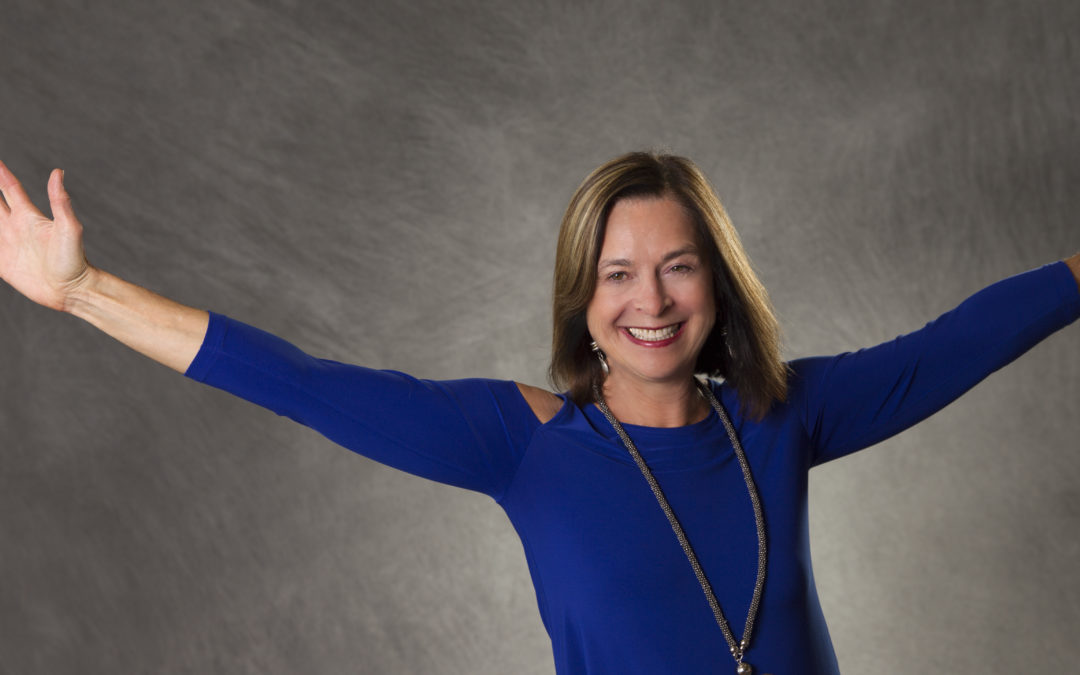
by pam | Mar 10, 2020 | Change, Changemaker, Leadership, Women in Business
There’s been a lot of talk in
recent years about women “being the change” we want to see in the world. Yet how do you “be the change” in your
day-to-day life? Here are a few thoughts that I hope will stimulate some of
your own.
How can we be the change we want to see in our homes?
- By choosing to share household responsibilities with our partners such as cooking, cleaning, yard work … and modelling these choices for our children
- Teaching our boys as well as our girls to cook, clean, do the dishes …
- Teaching our girls as well as our boys to mow lawns, shovel snow …
- Becoming financially literate. By this I mean “ … the possession of the set of skills and knowledge that allows an individual to make informed and effective decisions with all of their financial resources” (Source – Wikipedia; ) and ” … the ability to understand and effectively apply various financial skills, including personal financial management, budgeting, and investing. Financial literacy helps individuals become self-sufficient so that they can achieve financial stability.” (Source – https://www.investopedia.com/terms/f/financial-literacy.asp)
- Teaching our children financial literacy.
How can we be the change we want to see in our
communities?
- By identifying an issue we are passionate about and initiating
a project/program to make a difference in this issue (e.g. nutritious school meal
programs; animal welfare; homelessness)
- By identifying an existing group or organization that
is championing an issue we feel passionate about and contributing our relevant
knowledge, skills and/or our financial resources to that organization or group.
How can we be the change we want to see in our work?
- If we see issues we feel strongly about that are not
being handled effectively in our workplaces (e.g. gender inequality, need for
diversity training … ), we may observe and collect data to support our case and
identify others within the setting to support us to make a case to management.
- If we own our own businesses we may choose to donate
our time and/or money to an organization whose work we value (such as a group
that is pro zero waste, sustainability, women’s rights … )
- If we own our own businesses we may choose to develop
and offer workshops and keynotes to public and private sector organizations on
topics of interest and expertise such as: diversity and inclusion training,
change management, feminine leadership.
Now, over to you. What suggestions do you have for how you and
others can “be the change” you want to see in your households, communities,
workplaces …?
I welcome your comments
below.
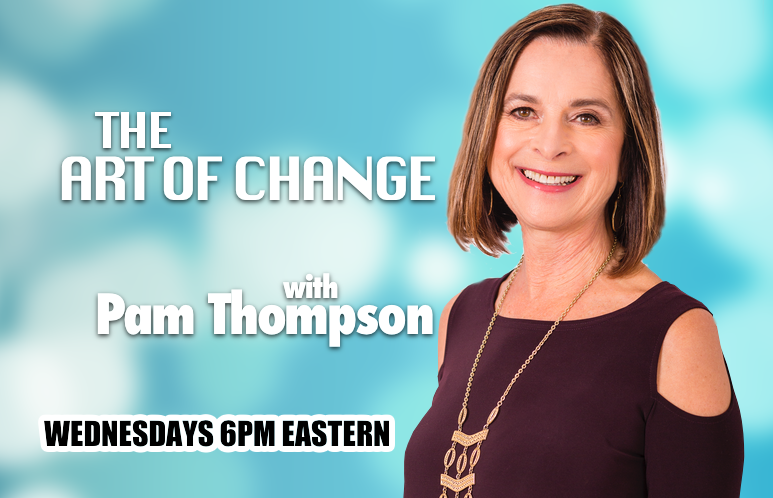
by PT-clc | Oct 29, 2019 | Change, Women in Business
Since I launched my weekly internet radio talk show – The Art of Change – http://boldbravemedia.com/shows/the-art-of-change/,
a number of people have asked me about my lessons from doing it, so I’ve
decided to write a post on just that.
Here are some key lessons I’ve learned:
- Get clear on your WHY – e.g. in terms of my show to showcase inspiring women leaders and changemakers who other women could learn from and be inspired by; to create a safe space for aspiring women leaders and changemakers to listen, learn and phone in weekly with questions.
- Identify your WHO for the show – i.e. your primary target audience; which for me is “aspiring women leaders and changemakers”. That said, my show is also relevant for men and women of a variety of ages and backgrounds.
- If signing a contract (e.g. with an internet
radio provider/media outlet) clarify
when and how the sponsorship benefits kick in
- Clarify
how the station will be promoting you – e.g. on which social media platforms
and how often?
- Plan your
show well in advance; e.g. at least 6 weeks out
- Reach out
to people you know, like and trust
to be on the show. Select them from your own network, invite others to
recommend folks to you, look for people on LinkedIn who you think might be a
good fit, connect with them and plan a call via Skype or zoom to make the final
decision and to plan the show.
- When inviting people for the show give them a tentative date to be on your
show.
- Clarify
your expectations of guests well in advance and reinforce them close to the
show date.
- Download
all of your shows so you have them to repurpose at a later date; e.g.
perhaps for your website.
- When
interviewing guests, be totally present and be conscious of what value you can
add to their responses.
- Have fun!
(and set that as intention with your guests)
I welcome your
comments and experiences below.
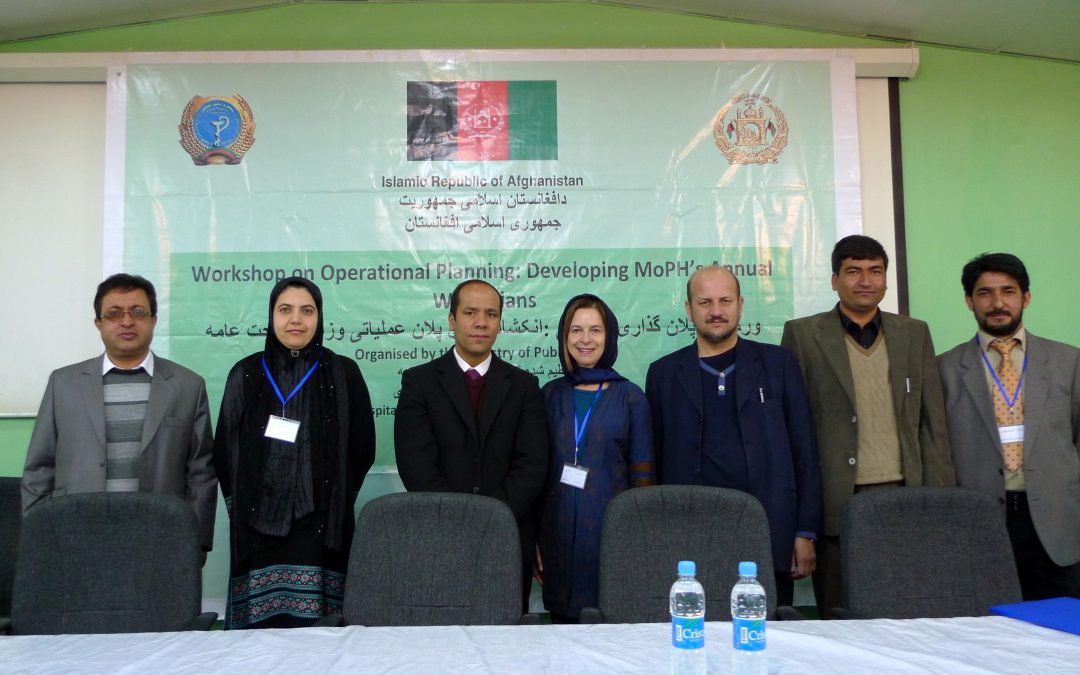
by PT-clc | Sep 14, 2019 | Beliefs & Values, Change, Leadership, LeadinginUncertainTimes
Our beliefs influence our
perceptions (how we see the world), and our behaviors. Dr. Bruce Lipton’s work,
a stem cell biologist and author of The
Biology of Belief[1],
provides strong evidence that we can change the character of our lives by
changing our beliefs. How powerful and empowering is that!
As a leader you have the power
to choose what you believe and the ability to influence others in your
organization, the groups you belong to, and in your families.
It is important to be aware of
our core beliefs and to consistently walk our talk so people feel safe, trust
us and are aware of what is expected of them. I will share some of my core
beliefs from leading and managing in a variety of organizations and cultures for
the past three decades, with the hope that you may connect with them and also
gain some clarity on the core beliefs that guide you as a leader.
Core Beliefs:
- We are all interconnected.
You may have heard that when a
butterfly flaps its wings in the Amazon, two years later it can result in a
tornado in Kansas. The butterfly effect[2]
has demonstrated that a small change in one area can result in powerful future
outcomes in another. If you as a leader believe in an organizational culture
that focuses on people, understanding and collaboration, you have the power to
shape and change the organization based on how you treat and respond to people
and challenging situations daily. How you communicate with others has an impact
throughout the organization and beyond. We all have heard about the
disheartened employee who has gone home and kicked his dog or beaten his wife.
I invite you to “try out” this
belief and have it in the forefront of your mind when you interact and
communicate with others on a daily basis in your workplace, community, and
family. Notice how this affects your interactions, the organizational morale
and environment.
- We are all the same. We
all want to be respected, valued, to feel safe, secure and to belong.
When living and working in
Afghanistan eight years ago, I was sitting in the rose garden of the Ministry
of Public Health eating lunch with one of my female Afghan colleagues when
there was a powerful explosion. Within seconds of the huge blast, my Muslim
colleague was phoning each of her family members to ensure that they were all
safe. I think most of us would have done the same. We all value family and care
about those close to us. The explosion was from a number of suicide bombers
entering the military hospital across the road. The result was the senseless
deaths of a number of Afghan patients and their families, and medical students.
I have enjoyed managing and
consulting in a number of culturally diverse and uncertain environments, and
believe my effectiveness has been largely due to the belief that we are all
the same. When you view everyone through the lens of that belief, you are
able to connect with them, and work effectively whether or not you speak their
language or have the same cultural background or religion. In Afghanistan using
participatory processes, I was able to collaboratively develop/co-create the
first strategic plan with the Ministry of Public Health, and have it pass
through all the policy layers and be signed off by the Minister within 9
months.
I invite you to experiment
tomorrow and try throughout your day to view everyone you see through the lens
and belief that “we are all the same”, whether it be a homeless person, a
colleague you have a tense relationship with, or a family member you have
difficulties relating to. Try this and notice what you notice.
- Nature connects me with my soul.
Did you know that when you walk
in forests, it reduces your blood pressure, reduces your heart rate and
increases the number of natural killer cells your body produces (i.e.
strengthens your immune system)? Based on longitudinal research, the Japanese have
institutionalized forest bathing or forest therapy. In their highly
competitive culture, they encourage and support people to regularly visit
centers in forests throughout Japan to forest bathe, and they continue to
collect powerful longitudinal data on its valuable effects.
I encourage you to spend time in
nature for 30 minutes or more at least 3 times a week. When I spend time in
nature I feel relaxed, energized, happy and free. My stress is reduced (if I’m
having a particularly stressful day). If as leaders we are committed to
spending regular time in nature, do you think it would positively impact our
effectiveness?
- Life is an adventure to be lived to the
fullest.
Based on this belief, I’ve led
an adventurous and full life so far [and hope to continue doing so!]. I’ve
lived and worked in the mountains of northern Colombia with peasant farmers in
the late 80s when Pablo Escobar was “running around” and the Medellin Cartel
was in full swing. I’ve lived and worked in Kabul, Afghanistan for 13 months
from October 2010 to November 2011 (a volatile and uncertain time), and managed
large multi-stakeholder projects in Pakistan and Nigeria where corruption is
rampant and violence can erupt at any time.
When I don’t have adventure in
my life I get restless and feel unfulfilled, and I either seek out adventure or
it serendipitously comes my way. Similarly, if contribution and making a
positive difference in the world is one of your core values[2] and you work in an organization that is
“all about the money”, over time you will likely feel unhappy and unfulfilled.
This will affect your personal and your work life.
- Embracing change is a creative
process that opens me up to new possibilities.
These are times of massive
change and uncertainty. We have a choice to either embrace or to resist change.
When we view change as a threat and believe it is to be feared, this has
negative impacts on our bodies, our minds, our relationships, our organizations
and on our bottom lines. However, when we believe “embracing change is a
creative process that opens us up to new possibilities”, it has positive
impacts on our bodies, our minds, our relationships, our organizations and on
our bottom lines.
To learn more about this and proven strategies for embracing change, I invite you to download and read “The Art of Change Framework: A Guide to Embracing Personal and Organizational Change” from the homepage of https://pamela-thompson.com/).
What
beliefs guide and support you as a leader?
I welcome your thoughts and comments
below.
[1] Lipton, B. H., The Biology of Belief – Unleashing the Power of Consciousness, Matter
& Miracles. New York City: Hay House, Inc.
[2] https://en.wikipedia.org/wiki/Butterfly_effect

by PT-clc | Aug 8, 2019 | Change, Changemaker, Leadership, Organizational Change
Did you know that approximately 70% of organizational
change initiatives fail? Why is that?
According to my own work on
five continents and a cursory review of the literature, the main reason
organizational change initiatives fail is because they do not adequately address the people side of change.
What do I mean by the people side of
change?
People are at the heart of
our organizations. They include everyone from the CEO, Senior Management Team,
Middle Managers, Team Leaders and Employees. They also include key stakeholders.
How do you address the people side of
change?
CEO and Senior Management Team –The key ingredient here is for CEOs and their Senior
Management teams to be clear on why they
are initiating a change – be it a culture change, reorganization,
leadership change, new strategic plan … AND communicate that “why” clearly down through all layers of an
organization. That said it is not enough
to communicate the change, it is important for others in the organization
to take ownership of the change (more
about that later).
Another important aspect is
that a CEO and their Senior Management Team understand change and how they typically respond to it. Some key
questions to think about are: On a scale from 1 to 10, how do you typically
respond to change? One being “It scares
me to death” and 10 being “I thrive
on it”. My experience has been that most leaders rate themselves from 8 to
10. They tend to thrive on change. However, there may be others on their teams
who are 4s or 5s. If so, it is important to be aware of that, open up the
conversation, and discuss how those folks may be supported throughout the
change process.
When a CEO is open about
change, acknowledges that many of us fear change, provides opportunities for
their people to learn how to embrace change versus resist it and models
this behavior for others, it improves the chances of success of an
organizational change initiative.
How do you embrace versus resist change?
Based on more than 25 years of
consulting and coaching with individuals and organizations on 5 continents, I’ve designed a 5-step process called “The Art of
Change Framework” to support leaders and their organizations to embrace change.
It is underpinned by the belief that “embracing
change is a creative process that opens us up to new possibilities”. It is
also supported by evidence from neuroscience, eastern psychology and
organizational development.
This process is best implemented on the “front end” of an organizational change
initiative and lays the foundation for that initiative. It works best in an
experiential workshop(s) format where leaders and their teams have the
opportunity to learn about change together, explore how they respond to change
and why, and receive tools to support them as they move into a change process.
The Value Add? When people learn about change and how they respond to
it, that not only supports their engagement, motivation, productivity and
positivity in the workplace, it also improves their personal lives.
I’ve included an excerpt from
“The Art of Change Framework: A Guide to Personal and Organizational Change”
below to illustrate the differential impacts between embracing versus resisting
change (full document available at https://pamela-thompson.com/).
What happens in Ourselves, Our Relationships and Our Workplaces when We
Resist Change versus Embrace it?
OURSELVES
|
Resist
|
Embrace
|
| We view change as a threat | We view change as an
opportunity to learn and grow and as a creative process that opens us up to new
opportunities |
We feel:
Angry
Depleted
Low in energy
Victimized
The increased stress over time
negatively impacts our health; can
lead to chronic illness and
negatively affect our career paths | We feel:
Open
Excited
Energized
Nonjudgmental
Over time we are more relaxed,
more flexible and open to creative
ideas. Our health may be positively impacted as we feel supported by
those around us and that we are
contributing to something greater than ourselves; may positively
impact our career paths |
In our interactions with others we:
Are not totally present
Are judgmental
May be argumentative | In our interactions with others we:
Are present
Are mindful
Seek to understand and support
others |
OUR RELATIONSHIPS
|
Resist
|
Embrace
|
Strained
Reactive
Judgmental
Characterized by
increased conflict
We feel alone,
victimized and that others don’t
understand us | Open
Responsive
Curious
Characterized by increased understanding, creativity and compassion
We feel part of something and
supported |
OUR WORKPLACES
Increased conflict –
“us” versus “them”
mentality
Reduced morale
Reduced engagement
Little innovation
Increased illness and absenteeism
Negative impact on the bottom line |
Increased cooperation,
collaboration and synergy
Increased morale
Increased engagement
Creativity and Innovation
Reduced absenteeism
Positive impact on the bottom line |
As leaders of teams,
organizations or community groups, it is essential that you understand change
and how you respond to it and also understand your team members and how they
typically respond to change. By engaging in facilitated experiential workshops
on the Art of Change, the
understanding among team members will increase and resistance toward a change
process, be it a reorganization, new leadership, new project or new strategic
plan, will decrease.
Providing Opportunities for people from various layers of the organization to input into the change process such as answering the question: How will the change affect me? And How can we as a team best support and positively contribute to the change initiative? AND the leadership taking those responses into consideration, is important. This includes input from key stakeholders which may be obtained through telephone interviews, focus groups, facilitated workshops … . Providing opportunities for people to input into the change process not only may provide interesting suggestions and perspectives, it will also build ownership for the change. People by nature, want to be respected, valued and feel like they belong; and enabling them to input into a change process supports these basic needs.
My experience has been that
when we provide the opportunity for people at various levels to input into a
change process, they often contribute ideas and suggestions that senior
management is not aware of/cannot see from their organizational vantage point.
In a recent episode of “The Art of Change” radio talk show, my guest, Shelley Gilberg, partner in PricewaterhouseCoopers, and experienced organizational change expert, noted that one reason many change initiatives fail is because “we cut off support too early to sustain change initiatives” – For more details check out: https://www.spreaker.com/user/bbm_global_network/the-art-of-change-show-9. Providing people at various layers of the organization the opportunity to receive training and support and instituting “check points” along the way for people to identify how they feel and why is important. This is also supported by Brene Brown’s interviews with a large sample of leaders from both public and private sector organizations.
In Summary
There is strong evidence that
the reason why many organizational change initiatives fail is because they do
not adequately address the people side of change. When we provide opportunities
for people from various layers of an organization, as well as key stakeholders
to input into a change process, when the CEO and Senior Management Team are
clear on why they are initiating a new change and communicate that effectively
throughout an organization and model positive change behaviors, and when leaders
and their teams from various levels in an organization are provided the
opportunity in experiential workshops to learn about change and explore how
they respond to it, the chances of success of an organizational change
initiative increases.
Learning and implementing the
5-step Art of Change Framework helps
you as a leader understand how you respond to change and is a tool to support
you and your team(s) to embrace it. In these challenging and uncertain times,
now more than ever, we need proven processes to support individuals and leaders
in communities, governments and organizations to create successful change
initiatives and through those efforts make a positive difference in the world.





